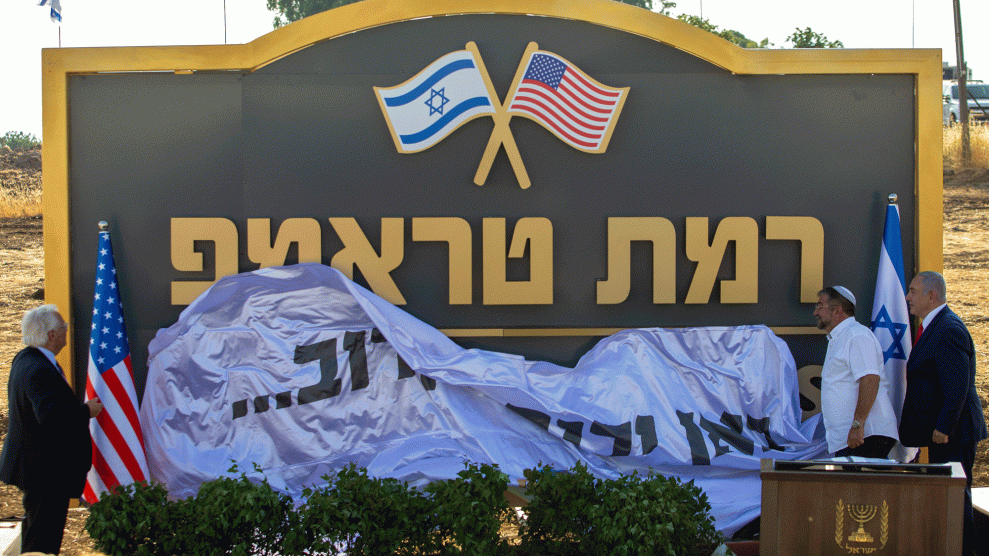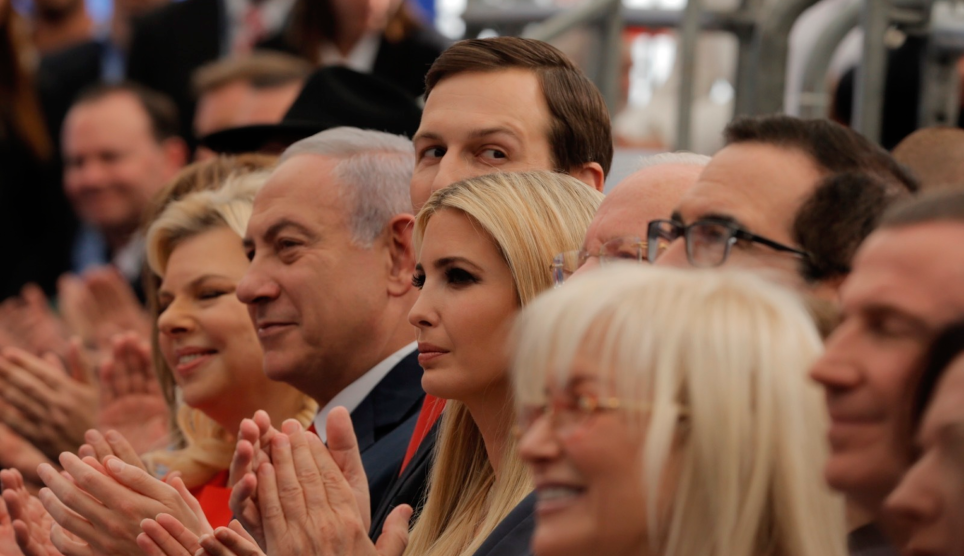
US Ambassador to Israel David Friedman and Israeli Prime Minister Benjamin Netanyahu unveil the sign to inaugurate a new settlement named after President Donald Trump in the Golan Heights on Sunday, June 16, 2019.Ariel Schalit/AP
On Sunday, Israel officially named a settlement in the disputed Golan Heights after President Donald Trump.
At the ceremony to inaugurate the new settlement, standing on a carpet of AstroTurf and in front of a gold-trimmed sign that reads “Ramat Trump,” Israel’s Prime Minister Benjamin Netanyahu said: “We are proud to have the opportunity to establish a new community, and also to honor a big friend…Many years have passed since a new settlement was established in the Golan Heights. Today it is happening: We are making an important step toward the rise of Ramat Trump. It will proudly carry the name of a very great friend of the State of Israel, and I am also very proud to say a great friend of mine—President Donald Trump.”
The move wasn’t exactly unexpected. Trump’s largely uncritical stance towards Israel has pushed the two leaders closer together since Trump took office. In December 2017, Trump broke with decades of US policy and recognized Jerusalem as Israel’s capitol, to the outrage of much of the Arab world and international community. Then in May 2018, he doubled down by relocating the United States embassy from Tel Aviv to Jerusalem. And in March, Trump declared his support for Israel’s claim to the disputed Golan Heights in a tweet: “After 52 years it is time for the United States to fully recognize Israel’s Sovereignty over the Golan Heights, which is of critical strategic and security importance to the State of Israel and Regional Stability!” Afterwards, Netanyahu announced he would name a settlement after Trump.
Israel captured the Golan Heights from Syria in the 1967 Six-Day War, and formally annexed it in 1981, eight years after Syria attempted to retake the territory in a 1973 surprise attack. While much of the international community considers Israel’s annexation illegal under international law, Trump has taken a more laissez-faire approach.
As for the settlement, the Associated Press reports that it has a population of 10 people and was in fact established 30 years ago. Netanyahu suggested on Sunday that the community may expand rapidly in the future. But that may be easier said than done. Ramat Trump, (Trump Heights in Hebrew), previously known as Bruchim, is a half-hour drive from the nearest Israeli town, but just 12 miles from the Syrian border, where the war occasionally spills over. It is also surrounded by high yellow grass and landmines, according to the AP.
David M. Friedman, the US Ambassador to Israel, noted in a Twitter post that this is the first settlement Israel has named after a sitting president since Harry Truman in 1949. Naturally, Trump called it a “great honor”.
Thank you PM @Netanyahu and the State of Israel for this great honor!🇺🇸🇮🇱 https://t.co/OUcf6s98UX
— Donald J. Trump (@realDonaldTrump) June 16, 2019
















